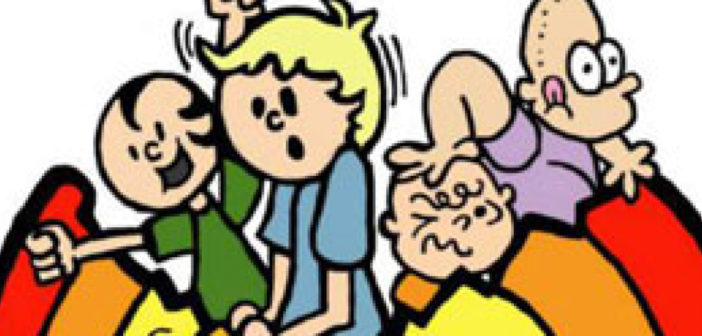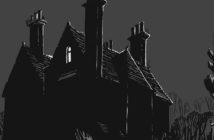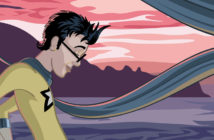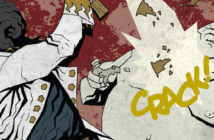Cartoonist Adam Fair’s This Gay Existence filled me with a single compulsion: if I ever meet the guy in person, I want to give him a big hug. While this comic book isn’t a sob story (far from it), it speaks of a gay character’s experience with not fitting in succinctly with truly any community. Straight guys tend not to befriend gay guys, and if it does occur it’s often only casually passing. But there’s no camaraderie among the gay community either. What’s a dude to do?
I speak of Eddie, the protagonist of This Gay Existence—he’s a gay twenty-something attending art school down south, though he describes himself in passing as “non-practicing” because while he’s attracted to a host of different men, they don’t seem to be all that interested in him. His friend and roommate, Zen, has all the luck in the dating department: he’s an honorable homosexual, knowing what he wants and not fearing to reach out and take it. While Eddie is “out” and isn’t afraid of his sexuality, it doesn’t seem to be working out for him. Zen wants to help alleviate this. And so, the fun begins.
I should pause here: this isn’t some coming-of-age comic with clean writing, succinct panels, or an identifiable cast of characters. If anything, This Gay Existence is a rough artist’s rendering of a comic strip, suited only for a newspaper spawned from the brain of Alfred E. Newman. The quality of Fair’s illustrations could possibly be a source of controversy over the worth of the book. Are they crude? Yes, they certainly are, but therein is the soul of the book’s charm. Often, GLBT comics are rendered by meticulous artists and the characters within are paragons of beauty to be worshipped. But with Fair’s rough sketches, all qualms and hang-ups over good (and bad) looks are tossed out the window. What we’re left with are the pure emotions and feelings of the situation—most often manifesting as witty, jesting anger.
Fair’s comic originally began as a strip for Prism Comics, the nonprofit organization that works without tire to champion a respected presence of the gay and lesbian experience in comics. Eventually Fair teamed up with Brian Anderson (So Super Duper, Friend of Dorothy) of Comic Book Geek (CBG) Comics where he began collecting his strips into issues. Currently, Fair is releasing his third installment.
Of the three, the first is my personal favorite: it’s a collection of edgy strips that doesn’t so much lampoon the style of Charles M. Schultz’s Peanuts comic strip as much as it spins its doe-eyed concept by showing real struggles taking place outside of homogenized, milquetoast America. There’s one strip in particular, “Jock Ache,” which addresses the fears of hetero frat boys being forced to room with “fags” in college. Each one of the strips nods at an every-day issue of prejudice that bothers and irritates the gay community.
The second and third issues tell a more consistent narrative, and especially in the second, “Fall Out,” we see Fair flex his pop-culture muscles. Here, Halloween is upon Eddie and his pals, and the journey of making it on-time to a party where Eddie awaits meeting the man of his dreams turns into a misadventure ala Superbad. There’s even a sly satire of my childhood favorite Garfield Halloween special (it used to be on YouTube, but no more), not to mention an intelligently fun spoof of the second Nightmare on Elm Street film, which was always attributed as a cautionary tale addressing closeted homosexuality.
What’s the relationship between a comic book and a comic strip? Who knows, but it seems similar to the divide between television and film. Either way, Adam Fair knows what he’s doing as a cartoonist. He has something to say and a sly sense of humor when making his sharp points. I divine that there is a lot of Fair himself inside Eddie’s character, and if that’s true, he has nothing to worry about. He’s not living in the shadows of others—he’s casting one of his own that everyone else should seek shelter within.
This comic book review originally appeared on Broken Frontier.




